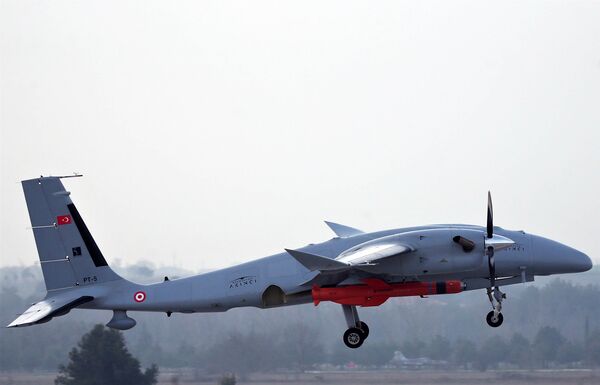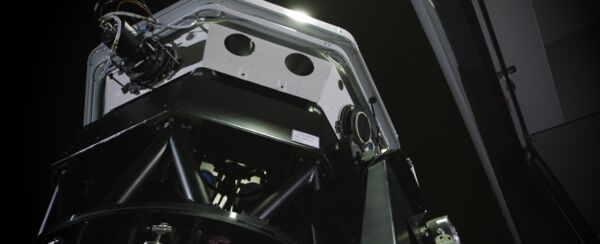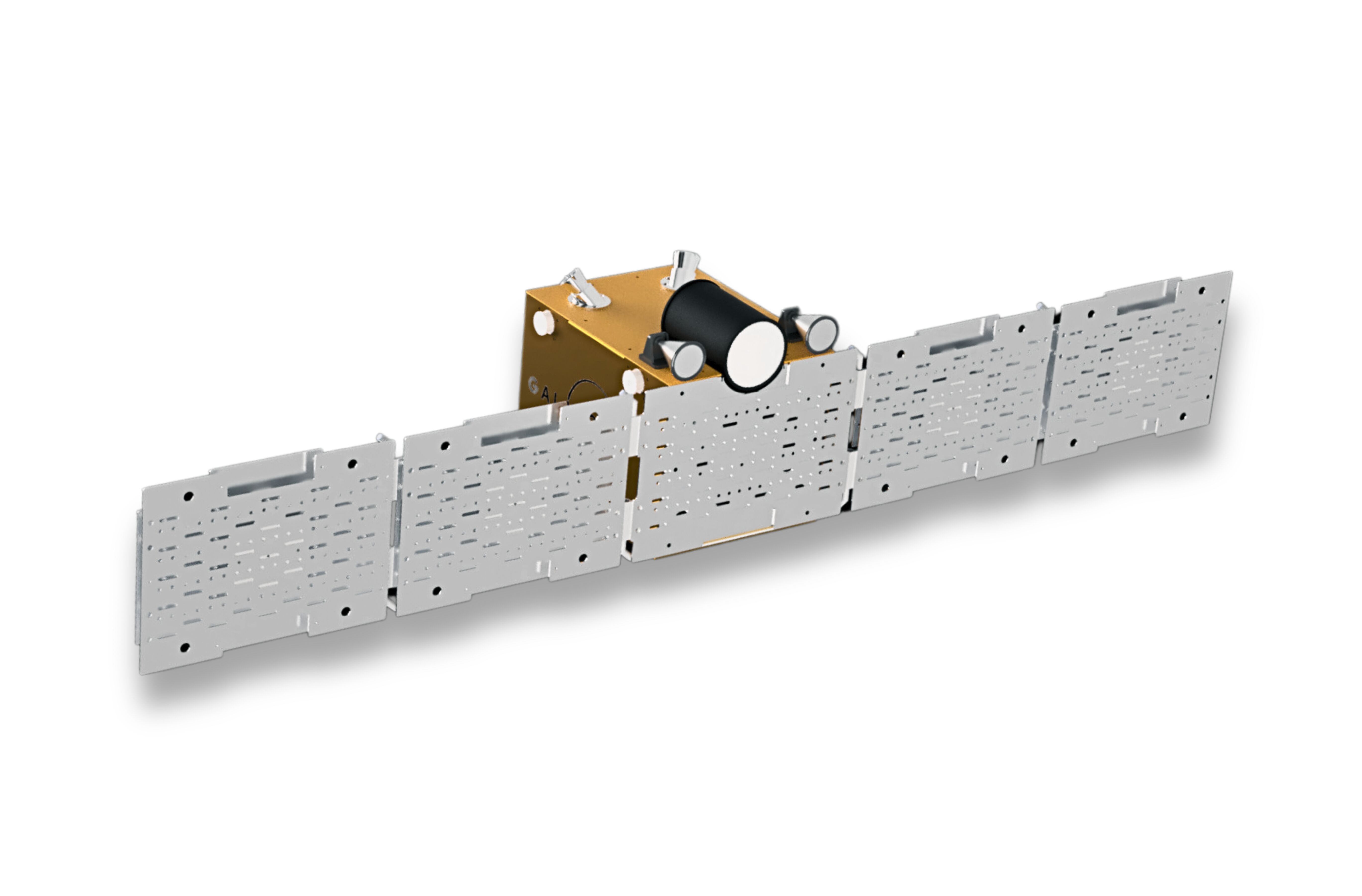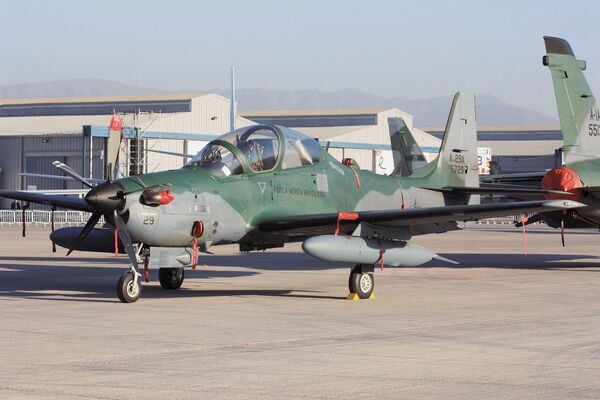- About
- Intara
- Capabilities
- Advisory
- Resources
- News
- Store
Baykar integrating more weapons on Akinci
15 March 2024
by Jeremy Binnie


A Bayraktar Akıncı takes off with a Roketsan Çakir cruise missile for the test-firing announced on 1 March. (Baykar)
The Baykar Bayraktar Akıncı unmanned aerial vehicle (UAV) is carrying out firing trials with versions of the Roketsan MAM-L and MAM-T guided bombs that can be used against targets concealed by cloud cover, the UAV's Turkish manufacturer announced on 15 March.
Both the MAM-L, which is the standard munition for Baykar's UAVs, and the MAM-T, a small glide bomb, usually use semi-active laser guidance, but the company said it was testing a MAM-L with a television (TV) seeker and a MAM-T with an imaging infrared (IIR) seeker.
Baykar released a video showing two MAM-Ls being loaded on the inner and middle hardpoints on the left wing of an Akıncı at Baykar's Çorlu facility, while the aircraft's right wing was shown with two smaller MAM-C guided bombs on its outer hardpoint and a MAM-T on its middle hardpoint. The inner hardpoints on both sides were loaded with general-purpose bombs that appeared to be fitted with glide kits.
Italy to enhance SSA with new ground-based sensors
26 April 2024
by Olivia Savage


Flyeye is a multiple-optics telescope with a very wide field of view that will be capable of classifying objects in space as small as 15 cm in LEO and 35 cm in MEO. The 6.5 m high and 4 m wide telescope will be used by the Italian Space Agency and military for SSA. (OHB Italia)
The Italian National Armaments Directorate (NAD) is procuring three ground-based sensors to enhance the country's space situational awareness (SSA), Janes learnt at the Military Space Situational Awareness Conference 2024, held in London from 22 to 24 April.
In total, two optical telescopes and one high-performance radar are being procured as part of its national SSA plans, Lieutenant Colonel Ferdinando Dolce, the head of SSA at NAD, said at the conference.
The first sensor being procured is a high-performance optical surveillance telescope from OHB Italia called Flyeye, Lt Col Dolce said.
Flyeye will have the capacity to monitor objects in low Earth orbit (LEO), medium Earth orbit (MEO), and geostationary orbit (GEO), Commander of the Space Situational Awareness Centre at the Italian Air Force Colonel Dario Tarantino told Janes
India's GalaxEye developing satellite with multiple sensors for Earth observation
25 April 2024
by Oishee Majumdar


A computer-aided design model of the satellite that GalaxEye Space is developing to conduct Earth observation for defence forces. The satellite will be equipped with SAR and EO sensor for enhanced surveillance. (GalaxEye Space)
Bangalore-based GalaxEye Space is developing a satellite that can carry multiple sensors for Earth observation to support the requirements of the Indian Armed Forces.
Speaking to Janes at the Indian DefSpace Symposium 2024 held in Delhi from 18 to 20 April, Deb Jyoti Pal, senior vice-president of business development at GalaxEye said the company is planning to launch the satellite into space in early 2025 for evaluation.
This low Earth observation (LEO) satellite will host an electro-optic (EO) sensor, and a synthetic aperture radar (SAR) with both sensors capturing data simultaneously to provide a more holistic view of strategic areas of interest, Pal added.
“The SAR sensor can capture data in day and night, and in any weather condition including in foggy or cloudy environment. EO sensors are not able to do this. On the other hand, SAR data can be difficult to interpret. This is where EO data can benefit a user,” Pal said.
Brazil to update A-29 Super Tucano aircraft fleet
25 April 2024
by Victor Barreira


A Brazilian Air Force Embraer EMB 314 Super Tucano light attack/counter-insurgency aircraft. The details of Brazil's fleet upgrade are as yet undisclosed. (Janes/Gareth Jennings)
Embraer Defense and Security is to carry out the mid-life upgrade (MLU) of 68 of the EMB 314 (locally designated A-29) Super Tucano training and light attack aircraft of the Brazilian Air Force, the service's commander Lieutenant Brigadier Marcelo Kanitz Damasceno said on 17 April during a presentation to the Brazilian Committee on Foreign Relations and National Defense.
The MLU is intended to extend the lifespan of the aircraft by up to 25 years, Lt Brig Damasceno said, and follows a June 2023 agreement between Embraer and the Brazilian Air Force to study a technological refresh of the Super Tucanos, although details were not disclosed.
Brazil purchased 25 A-29A and 51 A-29B aircraft in 2001, adding eight A-29As and 15 A-29Bs in 2005. The fleet was received between 2003 and 2012.
For more information, please seeEmbraer sees market for 490 Super Tucanos .
The Baykar Bayraktar Akıncı unmanned aerial vehicle (UAV) is carrying out firing trials with version...
Latest Podcasts
Iran Israel analysis
In this podcast Janes analysts discuss the Iranian attacks on Israel on the 14 April. They highlight the military systems used by Iran and the performance and impact of these on Israel. They also discuss the implications of this attack goi...
Listen nowJanes Case Studies
Using Janes Intara to build a common intelligence picture: Russian build up on the Ukrainian border
View Case StudyNews Categories
 Air Details
Air Details